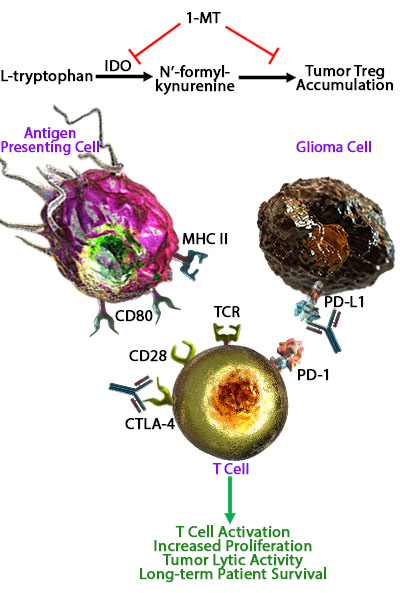 |
| Gliomas are tumors of the glial tissue. Due to their invasive nature and reclusiveness in the central nervous system, treatments can be very difficult to employ. Castro et al. recount an encouraging new therapy that combines several treatments to battle gliomas. One of these mechanisms involves the PD-1 and PD-L1 interaction, which can be studied with BioLegend's reagents, including conjugated antibodies and bulk GoInVivo™ products for in vitro mouse studies or ex vivo human research. |
 |
| Adapted from Castro, M.G. et al. 2015. Clin. Cancer. Res. 20:5147. PubMed |
| Glioma cells overexpress IDO (indoleamine 2,3-dioxygenase), which converts L-tryptophan to N'-formyl-kynurenine. This results in an abundance of Tregs in the tumor microenvironment. 1-MT can act as a competitive inhibitor, limiting IDO's ability to generate Tregs. Antigen presenting cells display CD80, which can interact with CTLA-4 (inhibition) or CD28 (activation) on T cells. Glioma cells express PD-L1, which binds to PD-1 on T cells. This causes T cell anergy and prevents tumor lytic responses. Combined therapy treatments of 1-MT and anti-PD-L1 and CTLA-4 antibodies have provided exciting anti-tumor results and long-term survival in glioma models. |



 Login / Register
Login / Register 






Follow Us